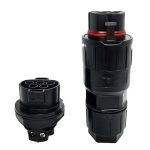The world of skincare offers a plethora of treatments and procedures designed to rejuvenate and revitalize our skin. Among these options, two popular choices are the Hydrafacial and the Regular Facial. Both treatments aim to improve the health and appearance of the skin, but they employ different techniques and technologies. In this blog post, we will explore the differences between Hydrafacial and Regular Facial to help you determine which one might be better suited for your skincare needs.
What is a Regular Facial?
A Regular Facial is a traditional skincare treatment that involves a series of steps to cleanse, exfoliate, and nourish the skin. It typically begins with a thorough cleansing to remove impurities and makeup residue. Next, the skin is gently exfoliated to remove dead skin cells and unclog pores. This step may involve manual exfoliation or the use of mild chemical peels. Afterward, a facial massage and mask application provide hydration and nourishment to the skin. Finally, the treatment concludes with the application of moisturizer and sunscreen.
Regular Facials offer several benefits, including improved skin texture, increased circulation, and a refreshed complexion. They can help address concerns such as acne, dullness, and uneven skin tone. However, the effectiveness of Regular Facials may vary depending on the products used and the expertise of the aesthetician. Additionally, regularity is key for maintaining results, as the effects of a Regular Facial may fade over time.
What is a Hydrafacial?
According to this beauty website expert said, a Hydrafacial is an advanced skincare treatment that combines cleansing, exfoliation, extraction, hydration, and antioxidant protection into a single procedure. This innovative treatment utilizes a specialized device that cleanses the skin with a vortex-like motion. It simultaneously exfoliates the outer layer of dead skin cells, extracts impurities from the pores, and infuses the skin with nourishing serums.
One of the key advantages of a Hydrafacial is its ability to deliver highly targeted and customizable treatments. The intensity of exfoliation and extraction can be adjusted according to the specific needs of the individual, making it suitable for various skin types and concerns. The infusion of serums rich in antioxidants, peptides, and hyaluronic acid helps to deeply hydrate the skin, improve elasticity, and reduce the appearance of fine lines and wrinkles.
Comparing Hydrafacial and Regular Facial
When considering Hydrafacial vs Regular Facial, several factors come into play. Let’s examine how these two treatments compare in addressing common skincare concerns, effectiveness, hydration, results, and comfort.
Skin Concerns Addressed
Regular Facials can be effective in addressing concerns such as acne, congestion, uneven texture, and discoloration. The exfoliation and deep cleansing involved in the treatment help to unclog pores, remove impurities, and promote cell turnover. However, certain skin conditions may require additional or more targeted treatments.
Hydrafacials, on the other hand, are designed to address a wide range of skin concerns. Whether you’re dealing with fine lines, hyperpigmentation, oily skin, or dryness, a Hydrafacial can be customized to suit your specific needs. The combination of exfoliation, extraction, and infusion of serums allows for a comprehensive treatment that tackles multiple issues simultaneously.
Effectiveness in Deep Cleansing and Exfoliation
Regular Facials provide a satisfactory level of cleansing and exfoliation, removing surface-level impurities and dead skin cells. The techniques used, such as manual exfoliation or mild chemical peels, can help improve skin texture and reveal a smooth and glowing complexion. However, the depth of exfoliation may be limited compared to the Hydrafacial.
Hydrafacials excel in deep cleansing and exfoliation. The vortex-like motion of the specialized device used in Hydrafacial treatments effectively removes debris from the pores and extracts impurities, resulting in a more thorough cleansing compared to Regular Facials. Additionally, the exfoliation process in Hydrafacial treatments targets not only the outer layer of the skin but also the deeper layers, promoting more significant skin renewal.
Differences in Hydration and Nourishment
Regular Facials typically involve the application of moisturizers and masks to provide hydration and nourishment to the skin. These products help to replenish moisture, improve skin elasticity, and enhance the overall appearance of the complexion. However, the absorption of these products may vary depending on individual skin conditions and the quality of the products used.
Hydrafacials, on the other hand, offer a unique advantage in terms of hydration. The infusion of serums during the treatment ensures deep penetration of nourishing ingredients into the skin. These serums are specifically formulated to address various skin concerns, providing intense hydration, and delivering antioxidants, peptides, and hyaluronic acid directly to the skin cells. As a result, the skin is left feeling plump, hydrated, and radiant.
Results and Longevity
Regular Facials can deliver noticeable improvements in skin texture, clarity, and overall radiance. However, the longevity of these results may vary. Typically, the effects of a Regular Facial may last for a few days to a couple of weeks, depending on factors such as skincare routine, lifestyle habits, and environmental factors.
Hydrafacial treatments often yield more immediate and long-lasting results. Many individuals report seeing improvements in their skin’s appearance immediately after a Hydrafacial session, with continued enhancement over the following days. The deep cleansing, exfoliation, and infusion of serums help to achieve a more significant and longer-lasting impact on the skin compared to Regular Facials. Regular maintenance sessions are recommended to sustain and maximize the results.
Comfort and Potential Side Effects
Regular Facials are generally considered safe and comfortable, with minimal discomfort experienced during the treatment. However, individuals with sensitive skin may experience mild redness or temporary irritation following certain procedures, such as chemical peels. It is important to communicate any skin sensitivities or concerns to the aesthetician before the treatment to ensure a tailored and comfortable experience.
Hydrafacial treatments are designed to be gentle and non-irritating, making them suitable for most skin types, including sensitive skin. The process is often described as soothing, with a cooling sensation experienced during the treatment. Hydrafacial treatments are generally well-tolerated, and any potential side effects, such as mild redness, tend to subside quickly.
Which is Better: Hydrafacial or Regular Facial?
Determining which treatment is better, Hydrafacial or Regular Facial, ultimately depends on your individual skincare needs, preferences, and budget. If you’re looking for a comprehensive treatment that offers deep cleansing, thorough exfoliation, intense hydration, and customizable options, a Hydrafacial may be the ideal choice. The versatility and immediate results of Hydrafacials make them popular for special occasions or when targeting specific skin concerns.
On the other hand, Regular Facials can still provide effective results and may be more suitable for those seeking a simpler and more budget-friendly skincare routine. Regularity is key to maintaining the benefits of Regular Facials, and they can be integrated into a consistent skincare regimen for long-term skin health.
In the battle of Hydrafacial vs Regular Facial, both treatments have their merits and can contribute to achieving healthy and radiant skin. Regular Facials offer a traditional approach to skincare, focusing on cleansing, exfoliation, and nourishment. They can be beneficial for addressing specific concerns and maintaining overall skin health. On the other hand, Hydrafacial treatments provide a more advanced and comprehensive solution, combining deep cleansing, exfoliation, hydration, and targeted serums for a transformative experience.
When deciding between Hydrafacial and Regular Facial, it is essential to consider your skincare goals, skin type, and budget. If you have specific concerns that require a more intensive treatment or desire immediate and long-lasting results, Hydrafacial may be the better option. However, if you prefer a simpler routine or have a limited budget, Regular Facials can still deliver satisfactory results.
Ultimately, it is recommended to consult with a skincare professional or aesthetician who can assess your skin condition and provide personalized advice. They can help determine which treatment aligns best with your skincare goals and guide you in choosing the most suitable option for your specific needs.
Remember, both Hydrafacial and Regular Facial are intended to enhance your skincare routine and promote healthier skin. Whichever treatment you choose, maintaining a consistent skincare regimen, protecting your skin from sun damage, and adopting a healthy lifestyle will contribute significantly to achieving and maintaining optimal skin health.
Conclusion
Hydrafacial and Regular Facial each offer unique benefits and advantages. By understanding the differences between these two treatments and considering your individual needs, you can make an informed decision about which one is better suited for you. Whether you opt for the advanced technology and customization of a Hydrafacial or prefer the simplicity and affordability of a Regular Facial, investing in regular skincare treatments is a valuable step towards achieving the healthy, radiant skin you desire.




